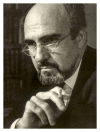Highights in the history of epilepsy: the last 200 years
- PMID: 25210626
- PMCID: PMC4158257
- DOI: 10.1155/2014/582039
Highights in the history of epilepsy: the last 200 years
Abstract
The purpose of this study was to present the evolution of views on epilepsy as a disease and symptom during the 19th and the 20th century. A thorough study of texts, medical books, and reports along with a review of the available literature in PubMed was undertaken. The 19th century is marked by the works of the French medical school and of John Hughlings Jackson who set the research on epilepsy on a solid scientific basis. During the 20th century, the invention of EEG, the advance in neurosurgery, the discovery of antiepileptic drugs, and the delineation of underlying pathophysiological mechanisms, were the most significant advances in the field of research in epilepsy. Among the most prestigious physicians connected with epilepsy one can pinpoint the work of Henry Gastaut, Wilder Penfield, and Herbert Jasper. The most recent advances in the field of epilepsy include the development of advanced imaging techniques, the development of microsurgery, and the research on the connection between genetic factors and epileptic seizures.
Figures



References
-
- Magiorkinis E, Sidiropoulou K, Diamantis A. Hallmarks in the history of epilepsy: epilepsy in antiquity. Epilepsy and Behavior. 2010;17(1):103–108. - PubMed
-
- Hippocrates. The Sacred Disease. Vol. 2. London, UK: Loeb Classical Library and Harvard University Press; 1965. translated by W. H. S. Jones.
-
- Sidiropoulou K, Diamantis A, Magiorkinis E. Hallmarks in 18th- and 19th-century epilepsy research. Epilepsy and Behavior. 2010;18(3):151–161. - PubMed
-
- Diamantis A, Sidiropoulou K, Magiorkinis E. Epilepsy during the middle ages, the renaissance and the enlightenment. Journal of Neurology. 2010;257(5):691–698. - PubMed
-
- Maisonneuve JGF. Recherches et observations sur l'épilepsie, presentées a L'École de médecine de Paris. Paris, France: 1803.
Publication types
LinkOut - more resources
Full Text Sources
Other Literature Sources

